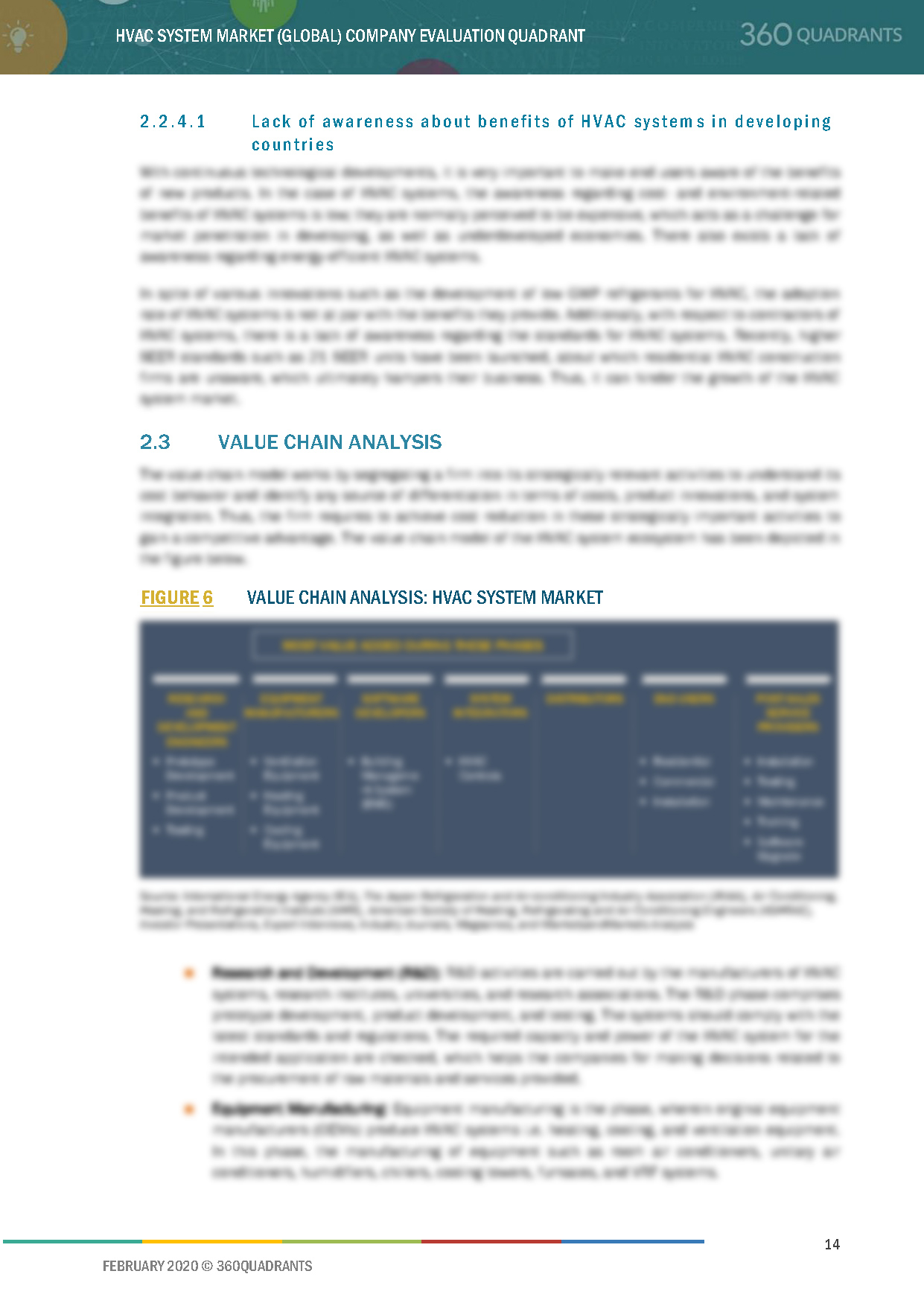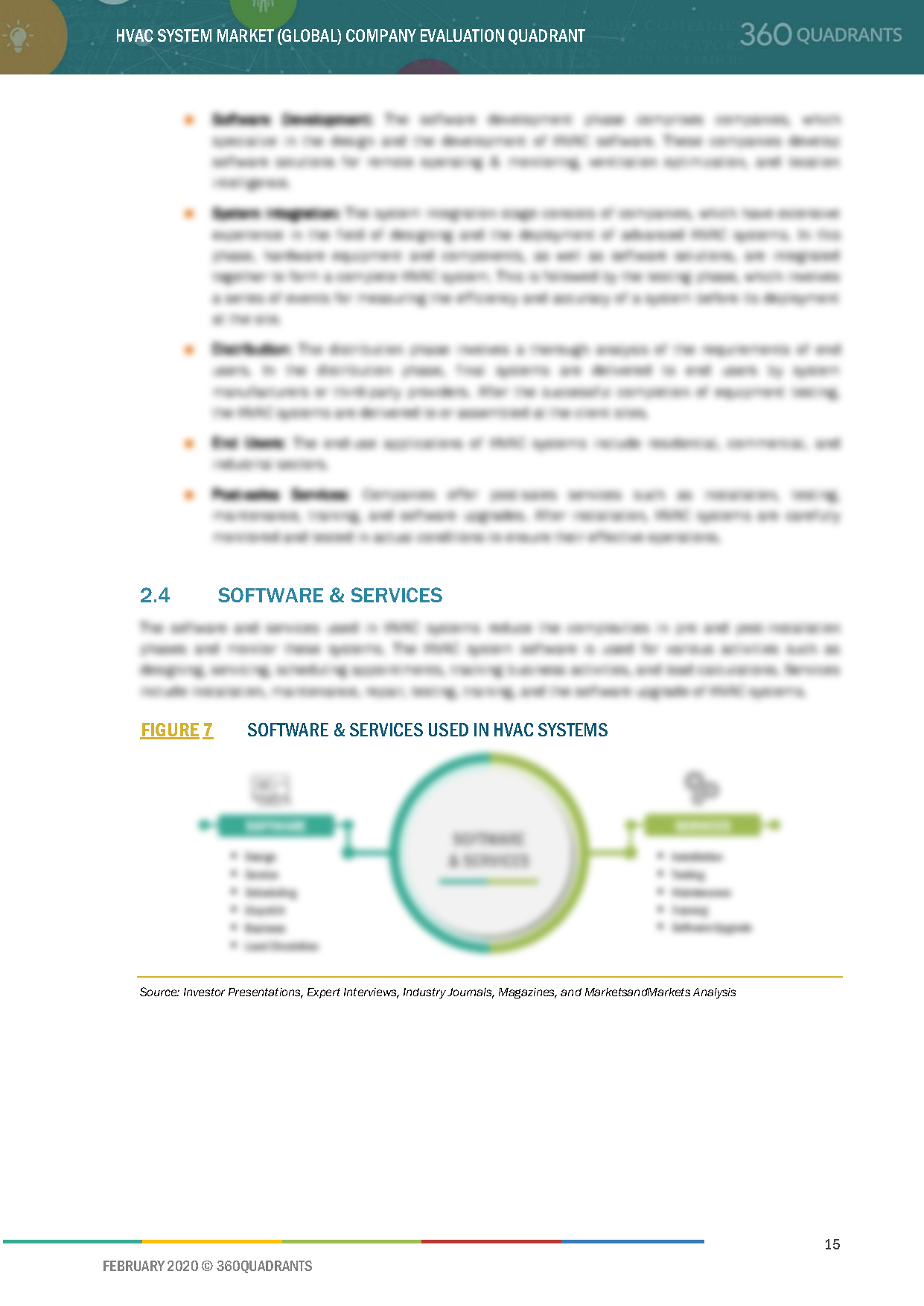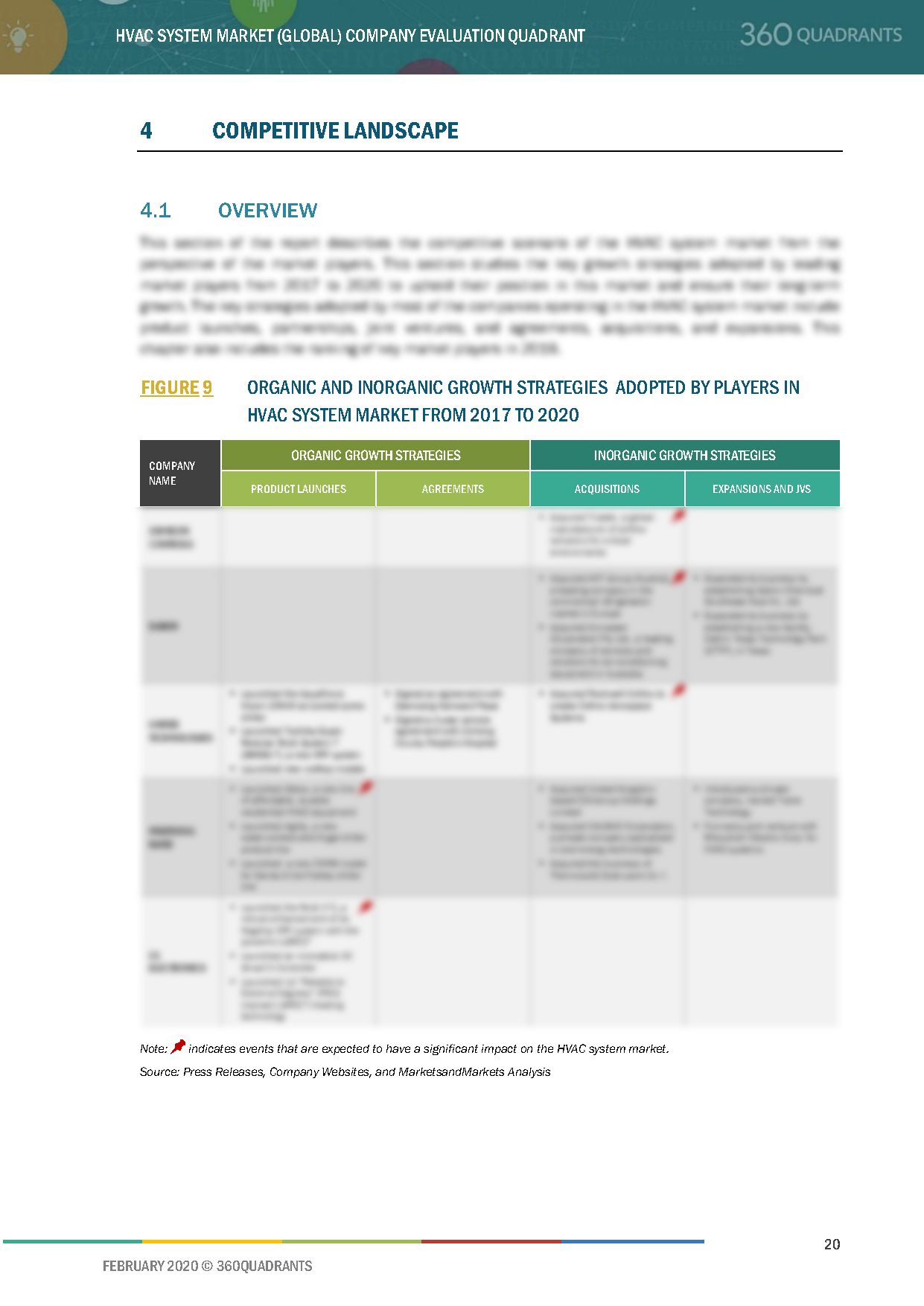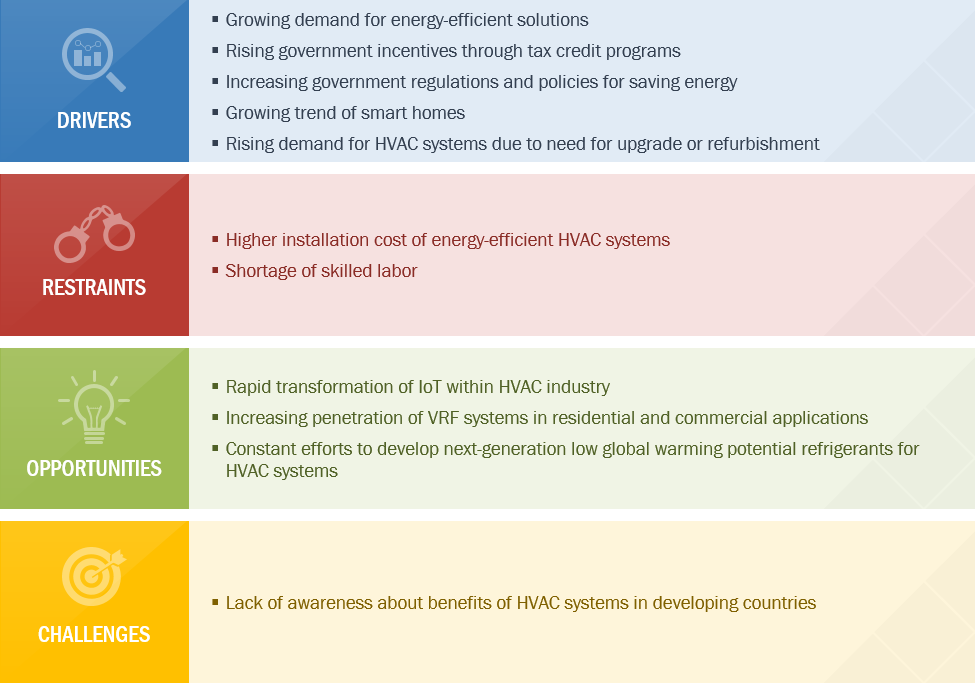HVAC System Quadrant Report

Table of Contents
1 Introduction
1.1 Market Definition
1.1.1 Inclusions and Exclusions
2 Market Overview
2.1 Introduction
2.2 Market Dynamics
Figure 1 HVAC System Market Dynamics
2.2.1 Drivers
Figure 2 Drivers for HVAC System Market and Their Impact
2.2.1.1 Growing Demand for Energy-Efficient Solutions
2.2.1.2 Rising Government Incentives Through Tax Credit Programs
2.2.1.3 Increasing Government Regulations and Policies for Saving Energy
2.2.1.4 Growing Trend of Smart Homes
2.2.1.5 Rising Demand for HVAC Systems Due to Need for Upgrade or Refurbishment
2.2.2 Restraints
Figure 3 Restraints for HVAC System Market and Their Impact
2.2.2.1 Higher Installation Cost of Energy-Efficient HVAC Systems
2.2.2.2 Shortage of Skilled Labor
2.2.3 Opportunities
Figure 4 Opportunities for HVAC System Market and Their Impact
2.2.3.1 Rapid Transformation of IoT Within HVAC Industry
2.2.3.2 Increasing Penetration of VRF Systems in Residential and Commercial Applications
2.2.3.3 Constant Efforts to Develop Next-Generation Low Global Warming Potential Refrigerants for HVAC Systems
2.2.4 Challenges
Figure 5 Challenges for HVAC System Market and Their Impact
2.2.4.1 Lack of Awareness About Benefits of HVAC Systems in Developing Countries
2.3 Value Chain Analysis
Figure 6 Value Chain Analysis: HVAC System Market
2.4 Software & Services
Figure 7 Software & Services Used in HVAC Systems
2.4.1 Software
Table 1 Different Functionalities of HVAC Software
2.4.2 Services
3 Company Evaluation Quadrant
3.1 Visionary Leaders
3.2 Dynamic Differentiators
3.3 Innovators
3.4 Emerging Companies
Figure 8 HVAC System Market (Global) Company Evaluation Quadrant
4 Competitive Landscape
4.1 Overview
Figure 9 Organic and Inorganic Growth Strategies Adopted By Players in HVAC System Market From 2017 to 2020
4.2 Ranking of Players in HVAC System Market
Figure 10 Ranking of Top 5 Players in HVAC System Market, 2019
4.3 Right to Win (Company Business Snapshot)
4.4 Competitive Situations & Trends
Figure 11 Product Launches Was Key Strategy Adopted By Leading Market Players From 2017 to 2020
4.4.1 Product Launches
Table 2 Product Launches, 2018–2019
4.4.2 Acquisitions and Expansions
Table 3 Acquisitions and Expansions, 2017–2020
4.4.3 Partnerships, JVS, and Agreements
Table 4 Partnerships, JVS, and Agreements, 2017–2020
5 Company Profiles
5.1 Daikin
5.1.1 Business Overview*
Figure 12 Daikin: Company Snapshot
5.1.2 Products/Solutions/Services Offered*
5.1.3 Recent Developments*
5.1.4 SWOT Analysis*
5.1.5 MnM View*
(*Above sections are present for all of below companies)
5.2 Ingersoll Rand
Figure 13 Ingersoll Rand: Company Snapshot
5.3 Johnson Controls
Figure 14 Johnson Controls: Company Snapshot
5.4 LG Electronics
Figure 15 LG Electronics: Company Snapshot
5.5 United Technologies
Figure 16 United Technologies: Company Snapshot
5.6 Electrolux
Figure 17 Electrolux: Company Snapshot
5.7 Emerson
Figure 18 Emerson: Company Snapshot
5.8 Honeywell
Figure 19 Honeywell: Company Snapshot
5.9 Lennox
Figure 20 Lennox: Company Snapshot
5.10 Mitsubishi Electric
Figure 21 Mitsubishi Electric: Company Snapshot
5.11 Nortek
Figure 22 Nortek: Company Snapshot
5.12 Samsung Electronics
Figure 23 Samsung Electronics: Company Snapshot
6 Appendix
6.1 Other Significant Players
6.1.1 Danfoss
6.1.2 Fujitsu
6.1.3 Gree
6.1.4 Hitachi
6.1.5 Midea
6.1.6 Panasonic
6.1.7 Qingdao Haier
6.1.8 Toshiba
6.1.9 Whirlpool
6.2 Methodology
This report identifies and benchmarks the key market players in the HVAC System market such as Daikin (Japan), Ingersoll Rand (Ireland), Johnson Controls (US), LG Electronics (South Korea), and United Technologies (US), and evaluates them on the basis of business strategy excellence and strength of product portfolio within the HVAC System market ecosystem, combining inputs from various industry experts, buyers, and vendors, and extensive secondary research including annual reports, company press releases, investor presentations, free and paid company databases. They are rated and positioned on a 2x2 matrix, called as ‘Company Evaluation Quadrant,’ and identified as Visionary Leaders, Dynamic Differentiators, Innovators, or Emerging companies.
SAMPLES:






- Updated version of this Quadrant
- Different Company Evaluation Quadrant
- 'Startup Only' Company Evaluation Quadrant
- Region or Country specific evaluation
- Application or Industry specific evaluation ..Read More
- Submit a Briefing Request
- Question about our published research
- Request for evaluation of your organization for specific market
- Request for re-evaluation of Company Evaluation Quadrant ..Read More


